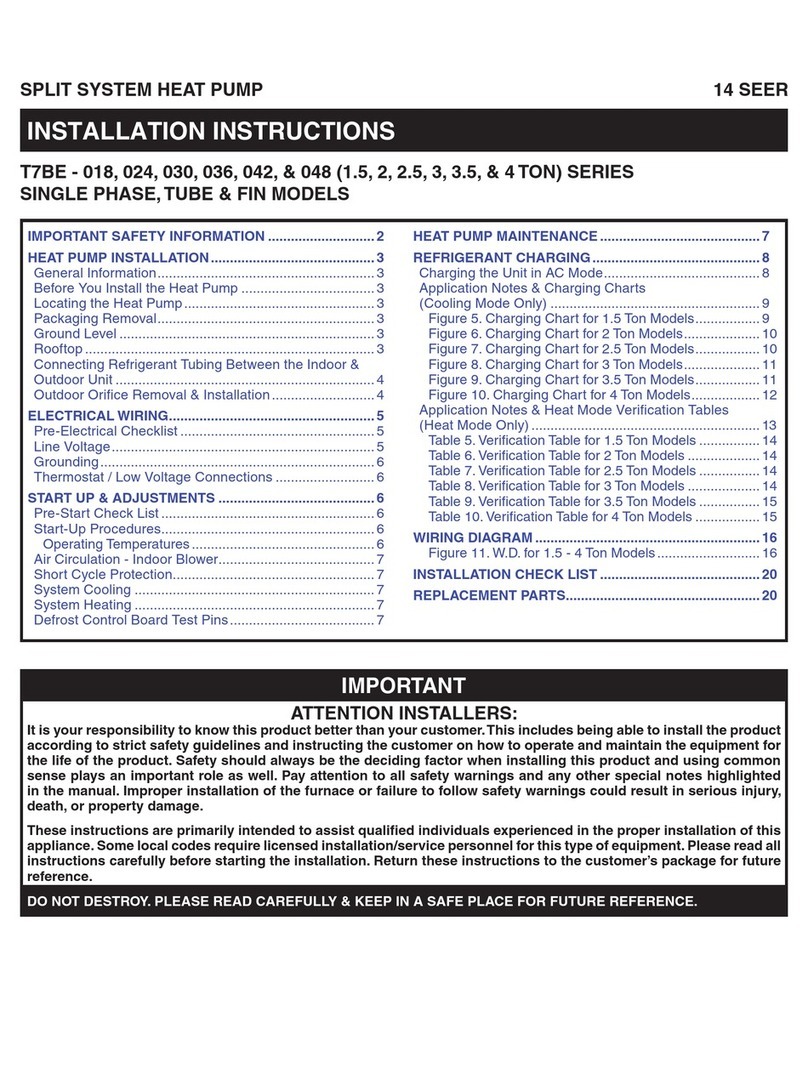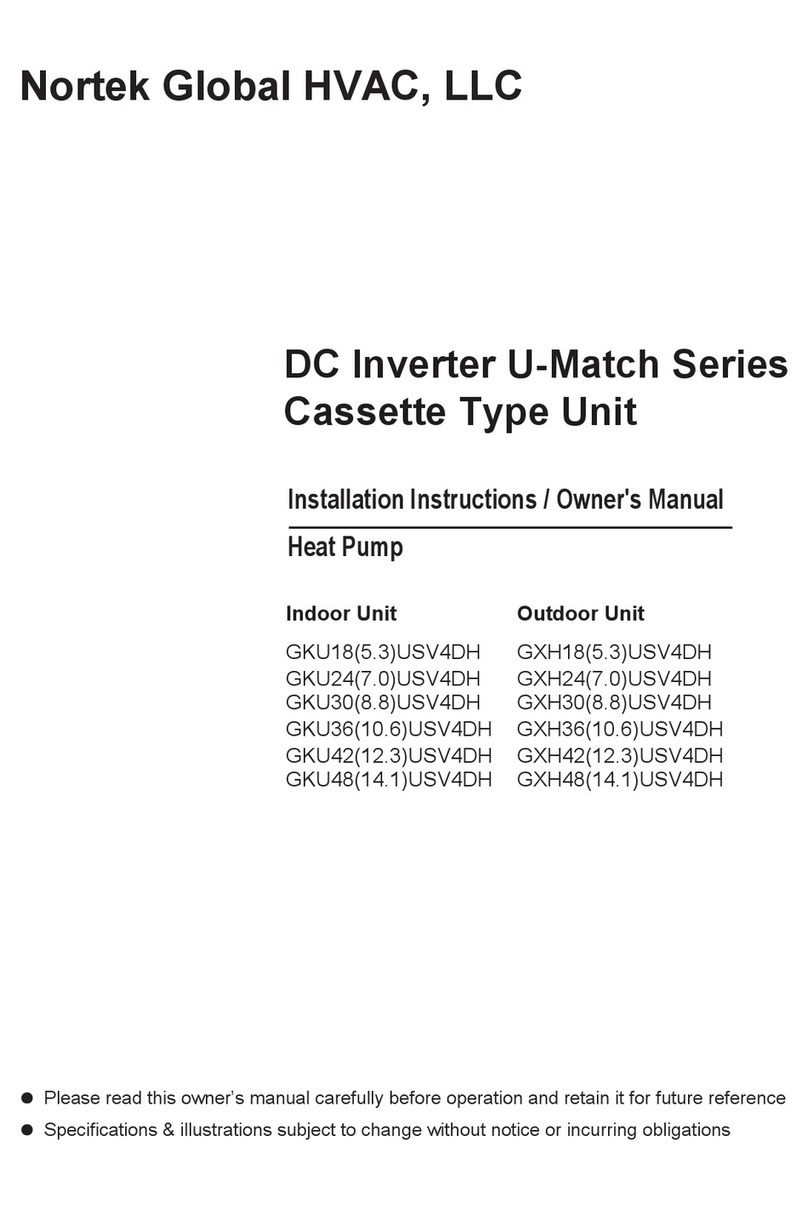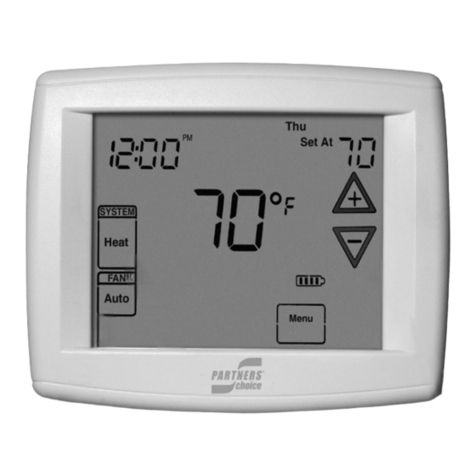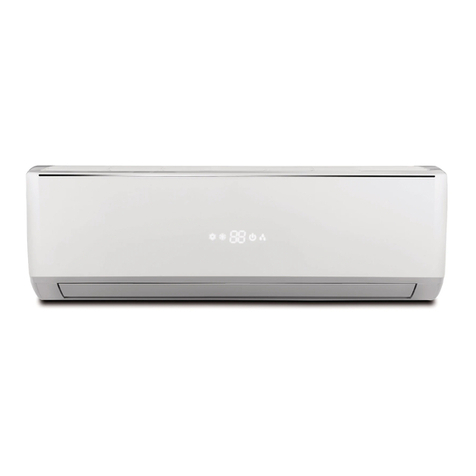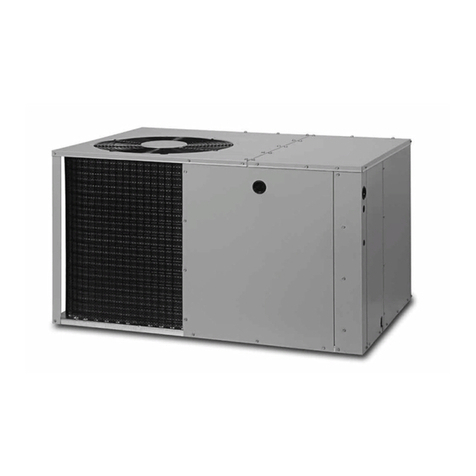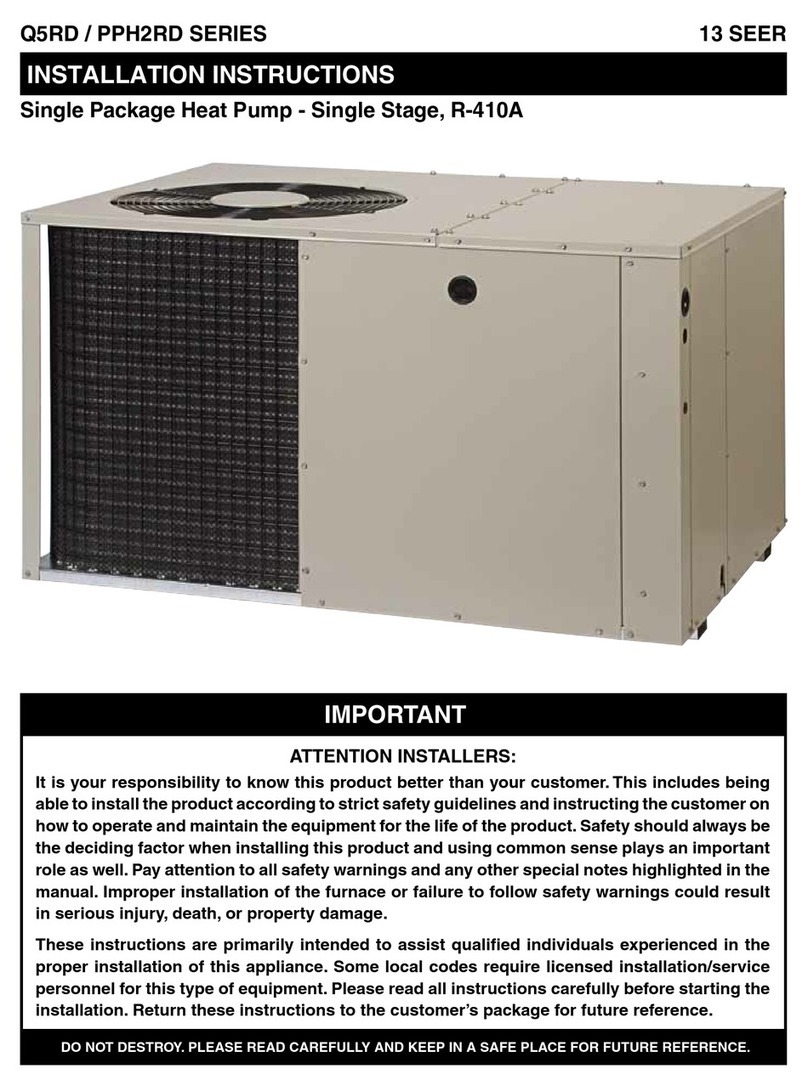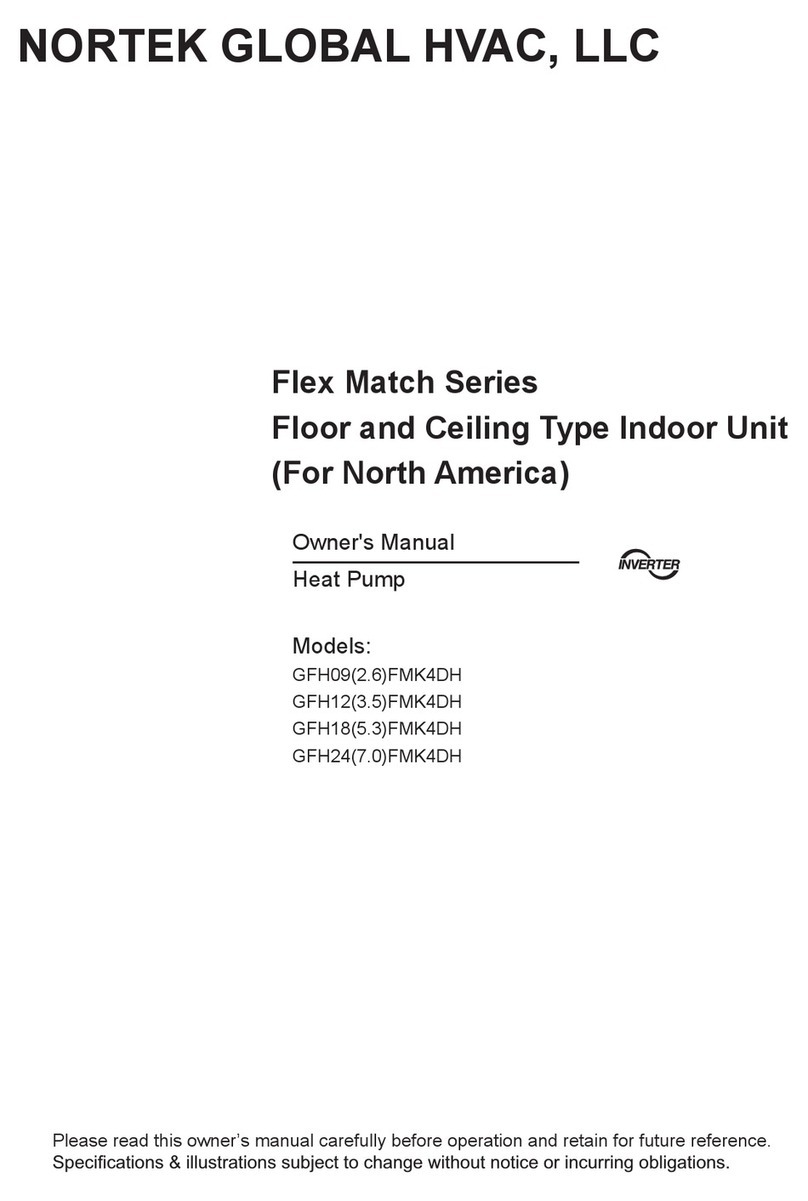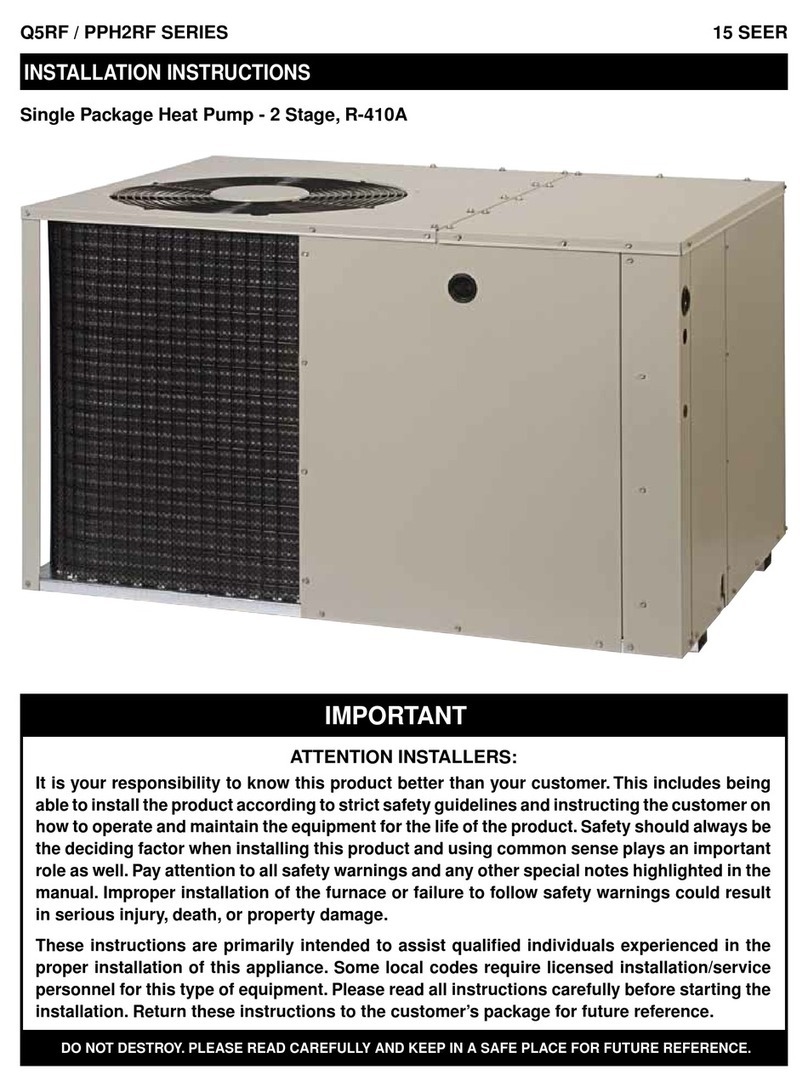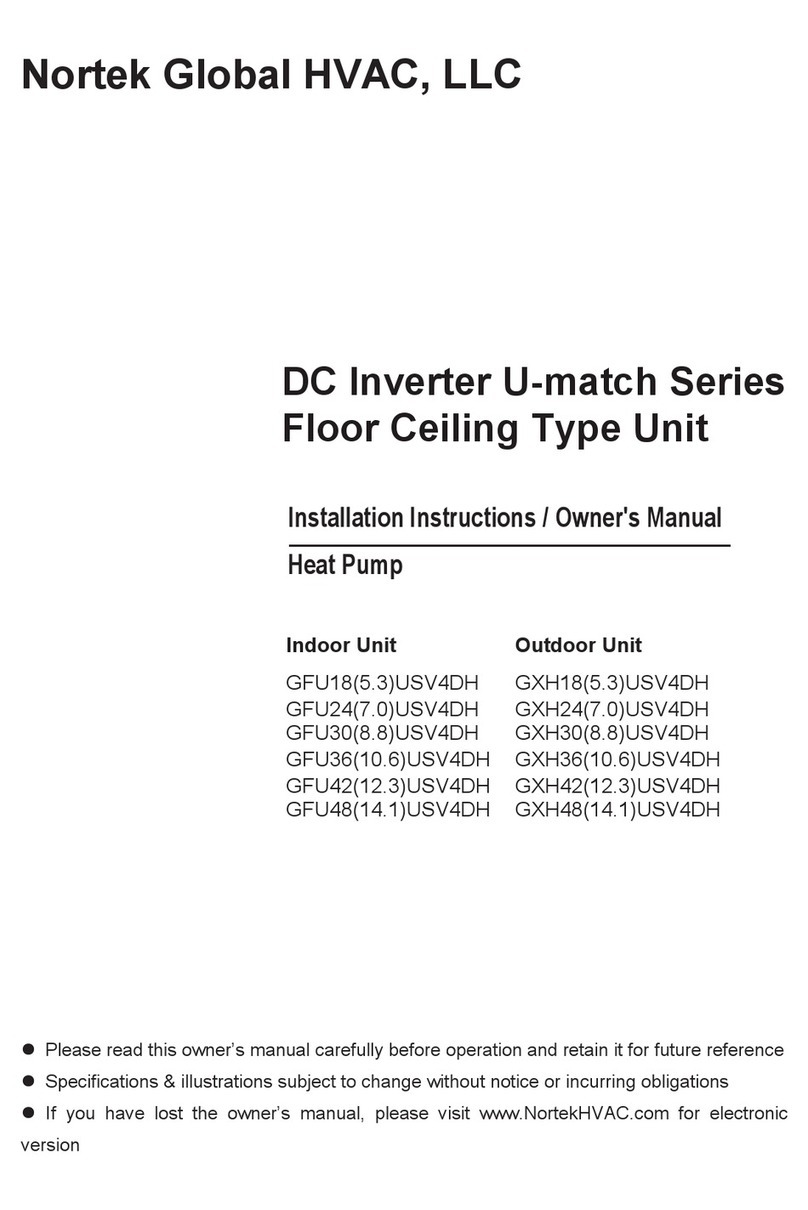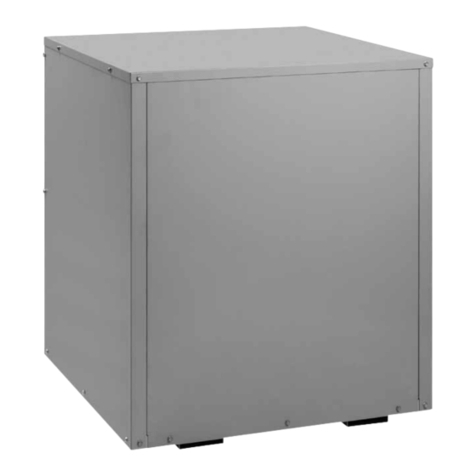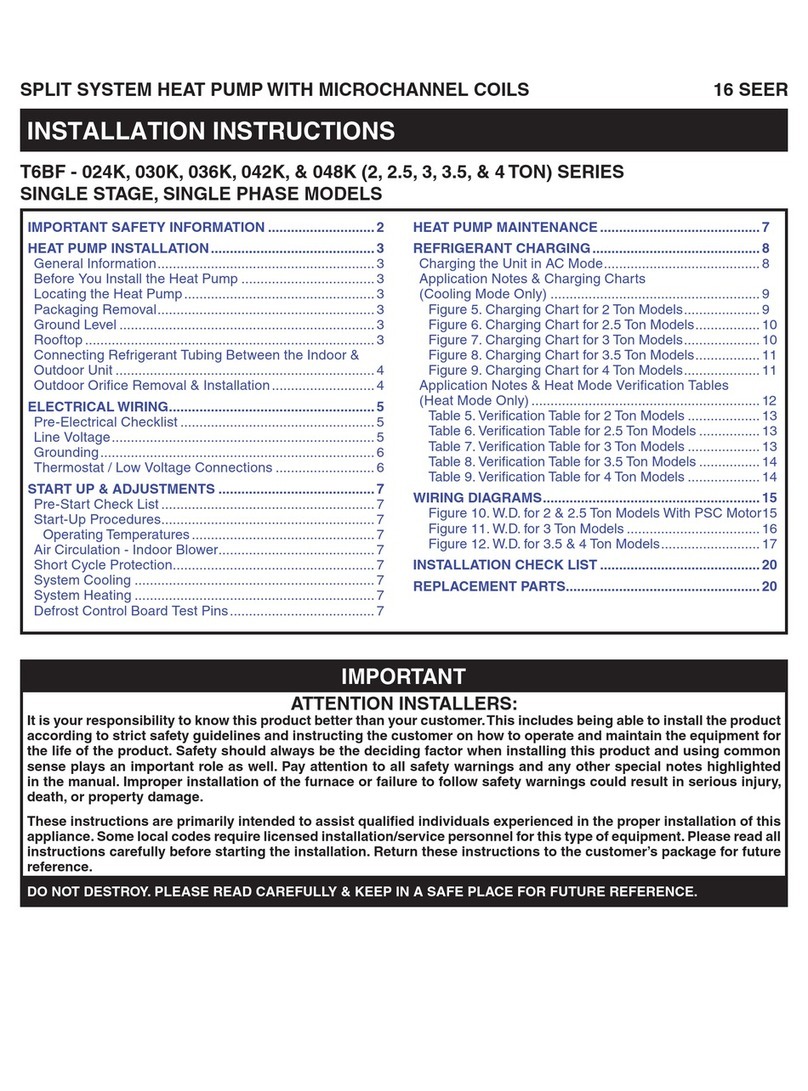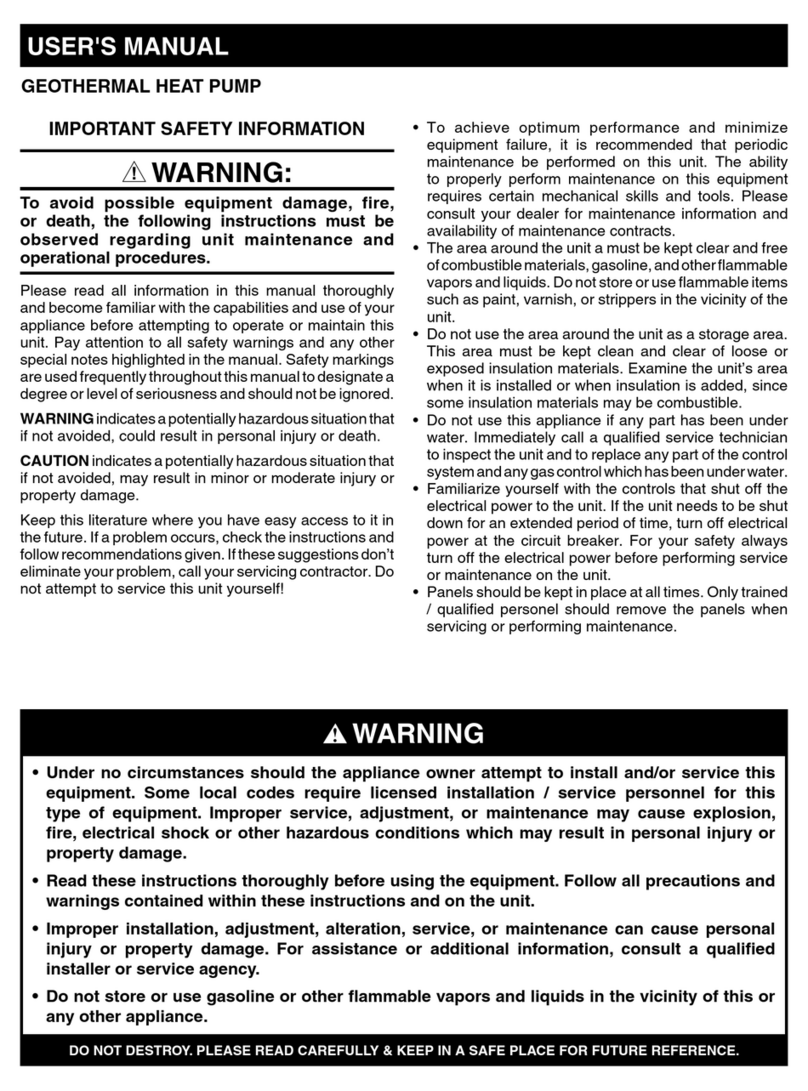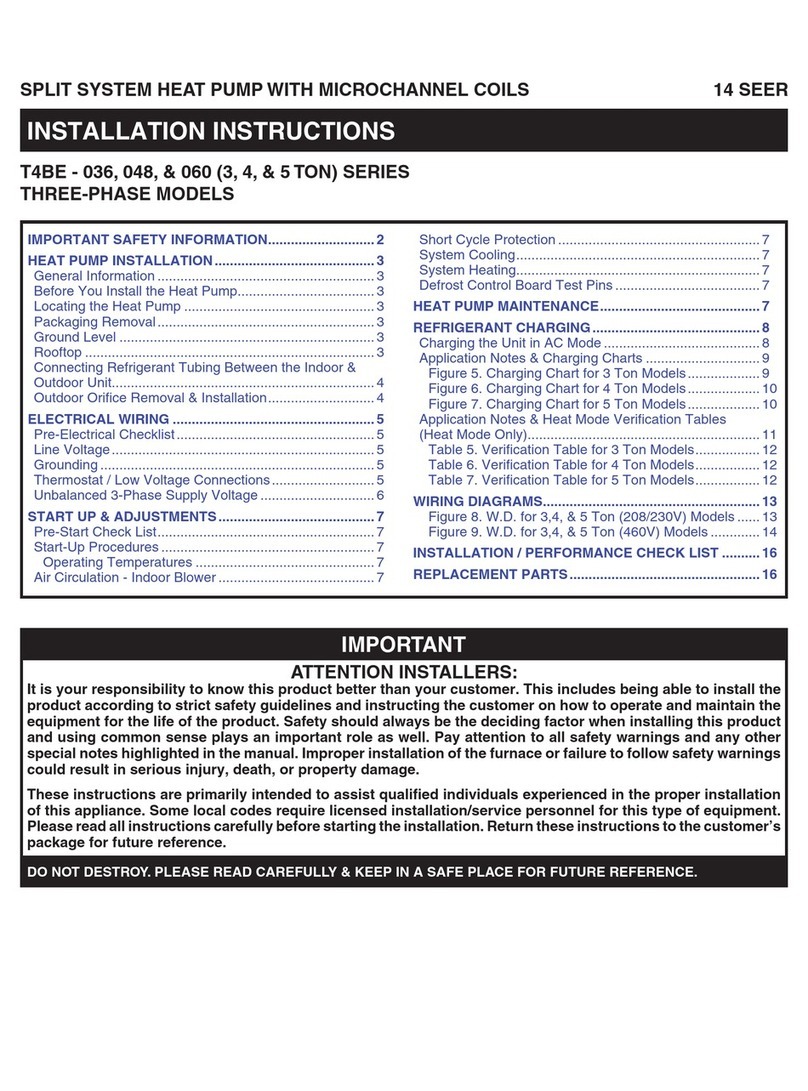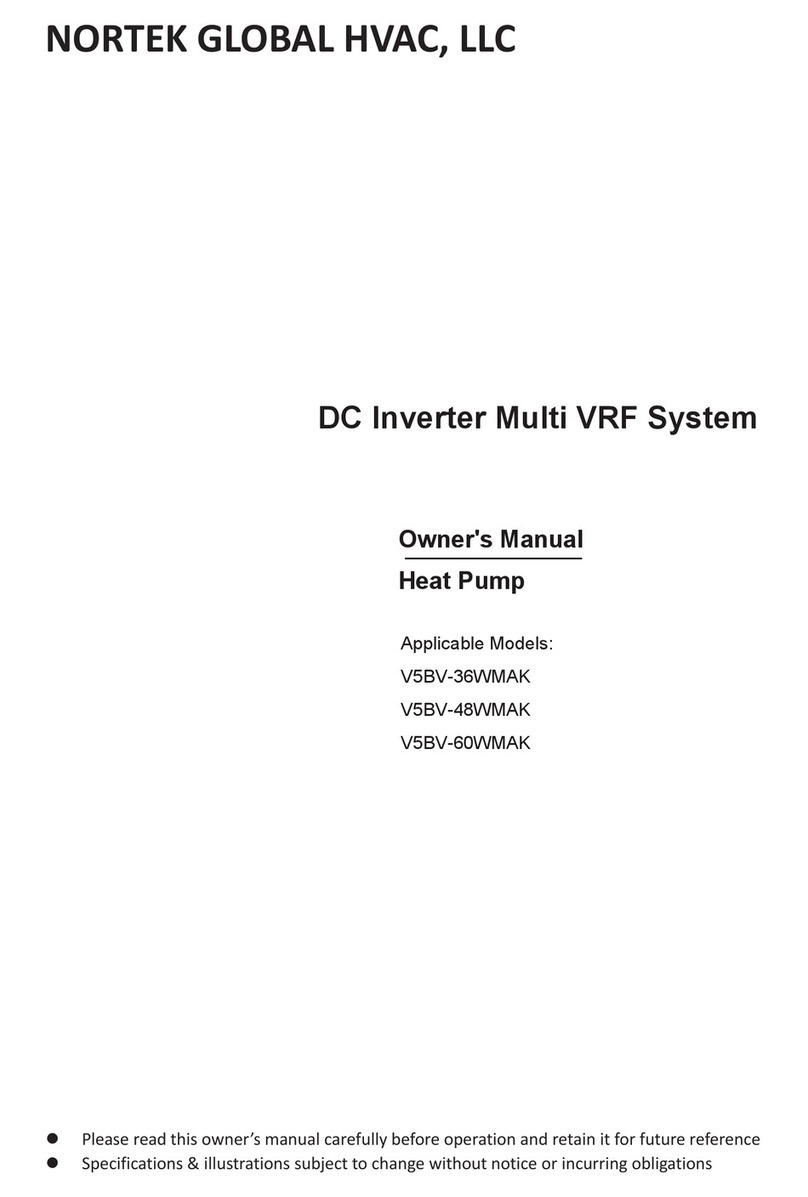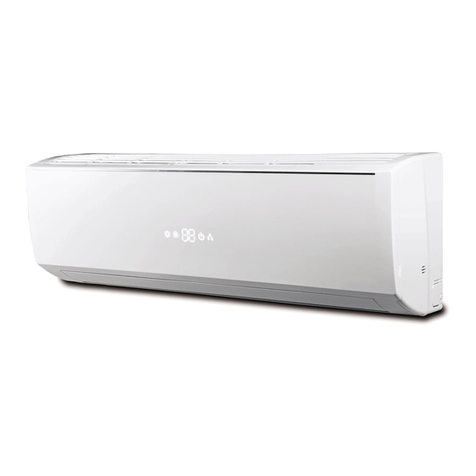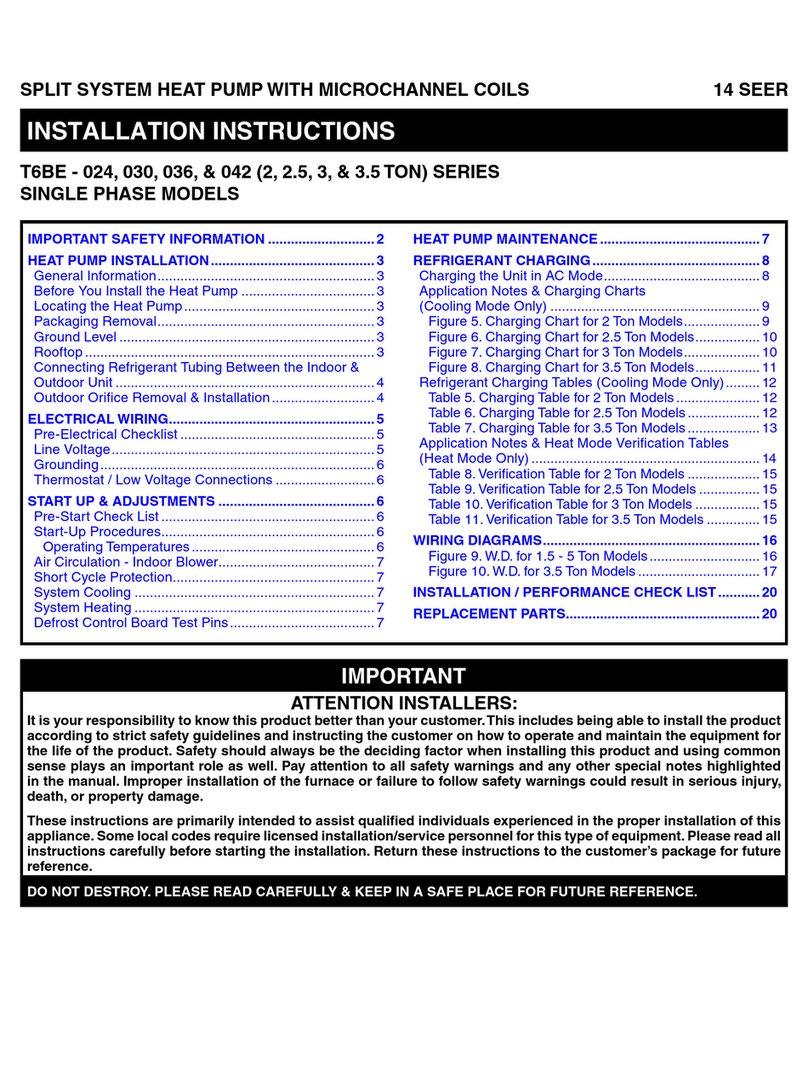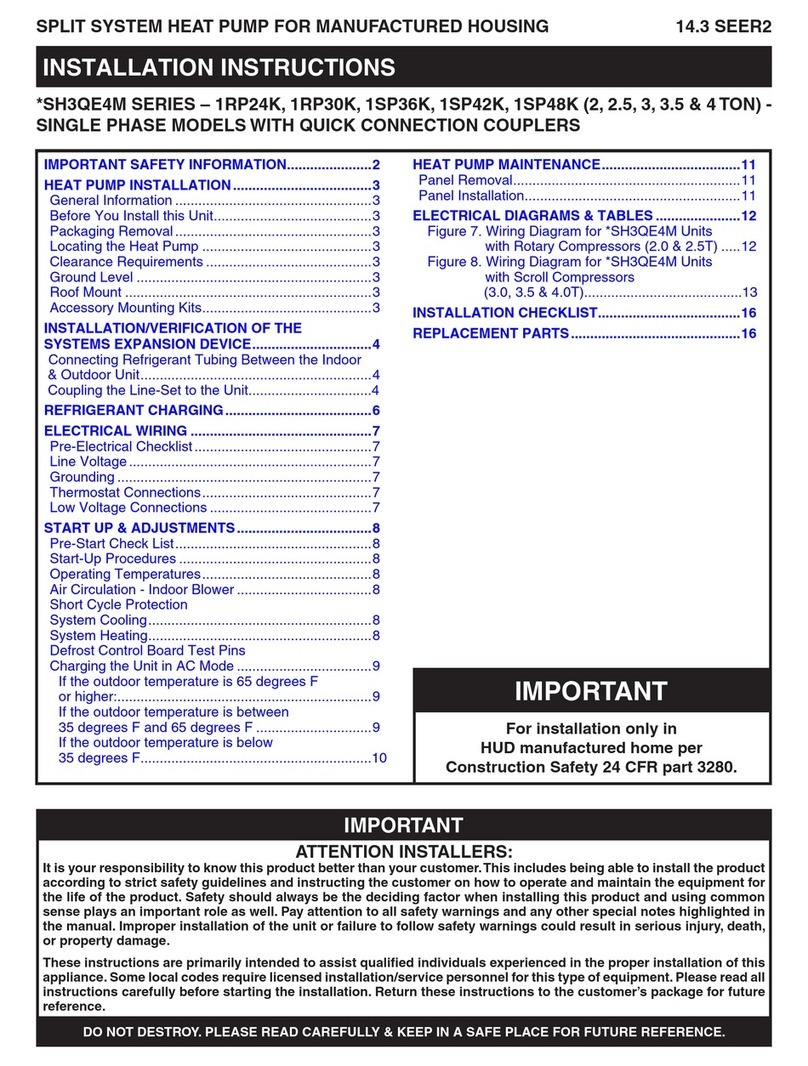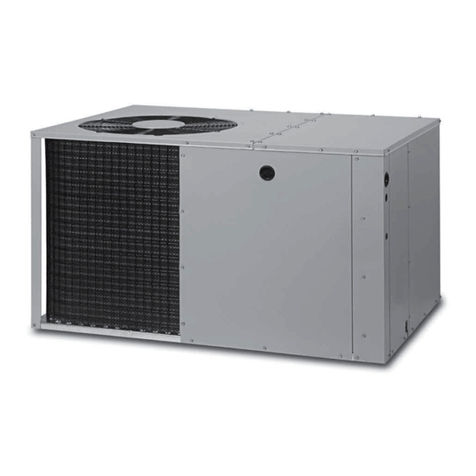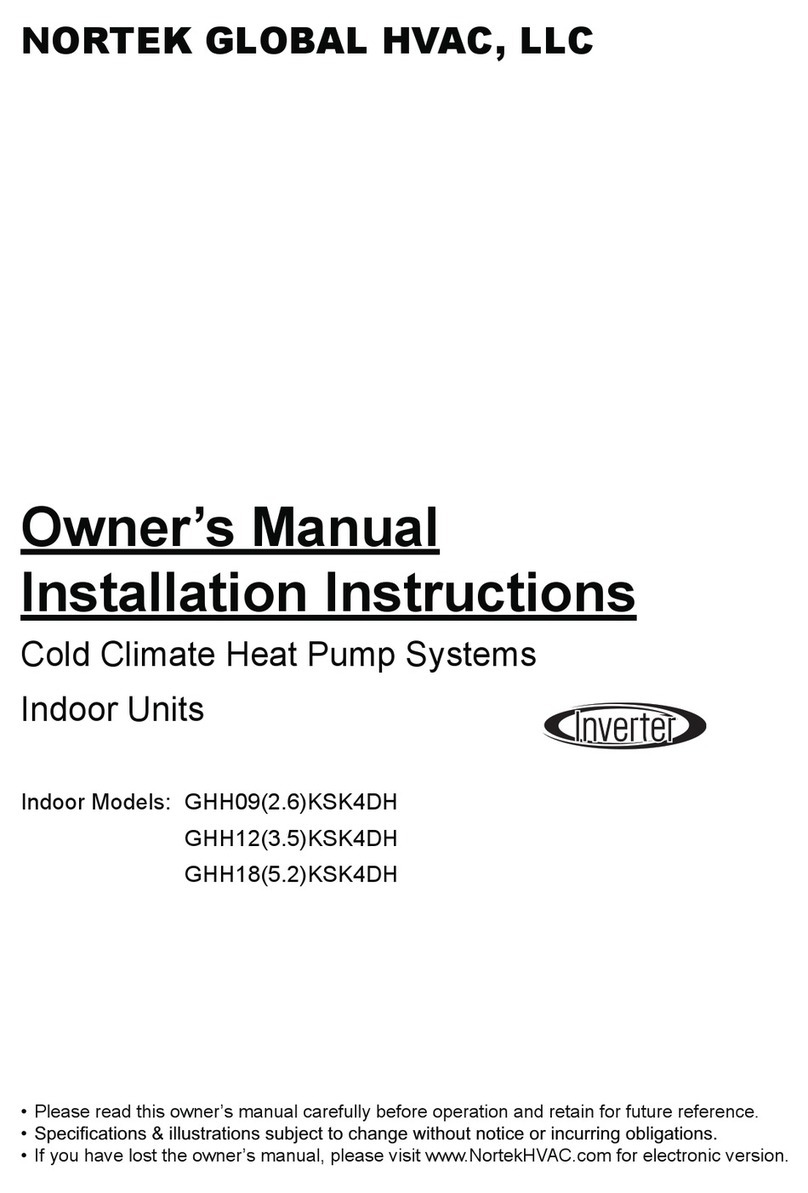
7
or circuit breaker for the unit. Incoming field wiring
and minimum size of electrical conductors and circuit
protection must be in compliance with information listed
on the outdoor unit data label. Any other wiring methods
must be acceptable to authority having jurisdiction.
• The outdoor unit requires both power and control
circuit electrical connections. Refer to Figure 7 (page
12) for identification and location of outdoor unit field
wiring interfaces. Make all electrical connections in
accordance with all applicable codes and ordinances.
• Overcurrent protection must be provided at the branch
circuit distribution panel and sized as shown on the unit
rating label and according to applicable local codes.
See the unit rating plate for minimum circuit ampacity
and maximum overcurrent protection limits.
• Provide power supply for the unit in accordance with the
unit wiring diagram, and the unit rating plate. Connect
the line-voltage leads to the terminals on the contactor
inside the control compartment.
• Use only copper wire for the line voltage power supply
to this unit. Use proper code agency listed conduit and
a conduit connector for connecting the supply wires
to the unit. Use of rain tight conduit is recommended.
• Units are shipped from the factory wired for 240 volt
operation. For 208V operation remove the lead from
the transformer terminal marked 240V and connect it
to the terminal marked 208V.
• Optional equipment requiring connection to the power
or control circuits must be wired in strict accordance
of the NEC (ANSI/NFPA 70), applicable local codes,
and the instructions provided with the equipment.
Grounding
WARNING:
The unit cabinet must have an uninterrupted or
unbroken electrical ground to minimize personal
injury if an electrical fault should occur. Do not
use gas piping as an electrical ground!
This unit must be electrically grounded in accordance
with local codes or, in the absence of local codes, with
the National Electrical Code (ANSI/NFPA 70) or the CSA
C22.1 Electrical Code. Use the grounding lug provided
in the control box for grounding the unit.
Blower Speed
The blower speed is preset (for operation) at the factory
for heating and cooling. These factory settings are listed
in Table 3 (page 17). For optimum system performance
and comfort, it may be necessary to change the factory
set speed.
Safety Protection
• A high-pressure switch is factory-installed and located
in the compressor discharge line of the unit. The switch
is designed to de-energize the system when very high
pressures occur during abnormal conditions. Under
normal conditions, the switch is closed. If the discharge
pressure rises above 650 psig, then the switch will
open and de-energize the outdoor unit. The switch
will close again once the liquid pressure decreases
to 460 psig. Please note that the switch interrupts the
thermostat inputs to the unit. When the switch opens
and then closes, there will be a 5 minute short cycling
delay before the outdoor unit will energize.
• A low-pressure switch is factory installed and located
on the suction line of the unit. The switch is designed
to protect the compressor from a loss of charge by
interrupting the thermostat inputs to the unit. If the
suction pressure falls below 20 psig, the switch will
open and de-energize the unit. The switch will close
again when the suction pressure increases above 35
psig. When the switch opens and then closes, there
is a 5 minute short cycling delay before the outdoor
unit will energize. Under normal conditions the switch
is closed.
CAUTION:
To avoid personal injury or property damage,
make sure the motor leads do not come into
contact with any uninsulated metal components
of the unit.
1. Shut off all electrical power to the unit and remove
the blower panel. Locate the orange and red wires
terminated to the blower motor. NOTE: The orange wire
controls cooling operation while the red wire controls
heating operation.
2. Verify the required speed from the airflow data found
in Table 3 (page 17). Place appropriate wire on the
correct motor speed tap for the required airflow point.
Thermostat Connections
• This heat pump may require a 2-stage cooling / heating
thermostat if used in conjunction with certain installed
accessories. Refer to your manual for additional
instructions.
• The low voltage wires must be properly connected to
the units low voltage terminal block as shown in Figure
7 (page 12).
• The Lterminal on the defrost control board is used for
fault monitoring. This is a 24V output and may be used
with compatible thermostats. Refer to the thermostat
manufacturer's manual to ensure compatibility.
FAILURE TO ENSURE COMPATIBILITY CAN LEAD
TO THERMOSTAT FAILURE.
• The thermostat should be mounted about 5 feet
above the floor on an inside wall. DO NOT install the
thermostat on an outside wall or any other location
where its operation may be adversely affected by radiant
heat from fireplaces, sunlight, or lighting fixtures, and
convective heat from warm air registers or electrical
appliances. Refer to the thermostat's instruction sheet
for detailed mounting and installation information.
